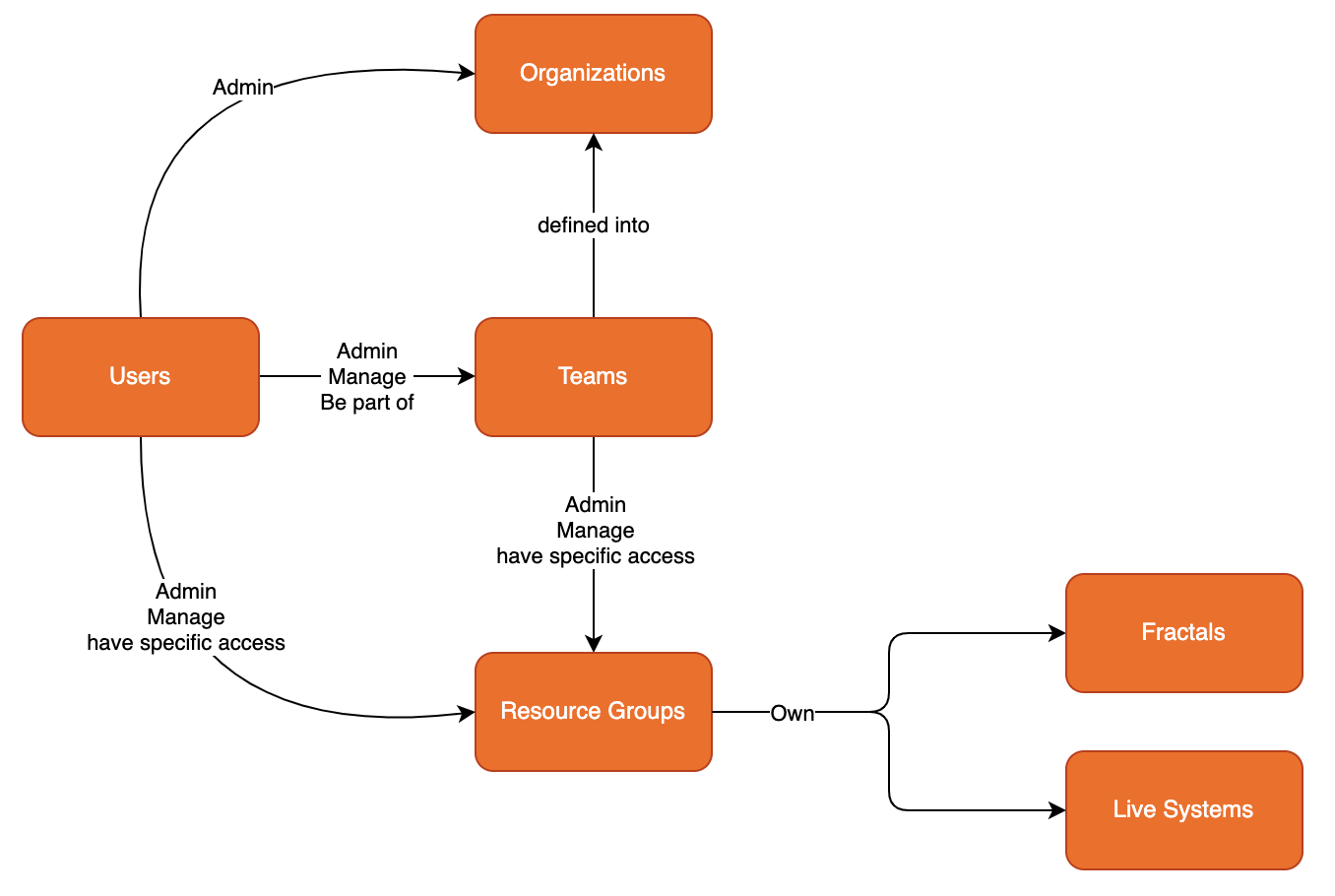Definition of Fractal Architecture
A Fractal is a component constituted of two entities:
- A Blueprint: a versioned group of components and integrations defining the infrastructural foundation of a compliant Live System;
- An Interface: a versioned set of operations through which the Fractal can be further specialized or extended; these operations can cause the addition, removal, or modifications of components and their integrations within the Fractal. An operation performed on a compliant Fractal will always produce either a compliant Live System or a further specialized Fractal. Any team member with access to a Fractal can instantiate it unlimited times, using multiple infrastructure stacks and vendors. The result of a Fractal instantiation is called a Live System.
Other entities
To deliver on its promise, Fractal Cloud uses several more entities than just Fractals and LiveSystems. These are:
- Resource Groups: are logical sets of Fractals and LiveSystems. We can say that the Resource Group owns these entities.
- Teams group users and help manage access at scale to one or more Resource Groups.
- Users represent actual people interacting with Fractal Cloud. They can:
- Administrate, Manage or have specific access to one or more Resource Groups
- Administrate, Manage or be part of one or more Teams
- Administrate one or many Organizations
- Organizations hold generic metadata and group Teams
The diagram below tries to underline the relations between the entities so that anyone can grasp how they connect.

Two available approaches
Fractal Cloud has been thought and built for Enterprise Scale. Two approaches are available to support your organization in any situation.
Live-System First
- Focus on the end system for quick roll-outs
- Best for PoCs and Moonshots projects
Using the approach we named "Live-System First" you can describe the desired state of your infrastructure through code, pretty much as you might already be doing today.
However, the difference is that with limited amount of code you will be able to spawn tailored infrastructure to the need of your application using standard and security-hardened components ready to support your application and services.
When you are then ready for enterprise-grade, you can extract a reusable Blueprint from your running Live System, making it available for your colleagues across your organization, ensuring cross-pollination of proven best practices, technologies, and architectures.
Fractal First
- Focus on reusability and automation across your organization
- Advised on establishing a cloud adoption and governance framework at the enterprise level
Through the approach we named "Fractal First" you tackle Cloud-Native complexity at the enterprise level from the beginning.
You will first define Blueprints, reusable sets of components, and their relations, which put the basis for compliant solutions in your IT Landscape. To each Blueprint, you can associate an Interface, a versioned set of operations through which the teams can modify the Blueprint while ensuring application compliance.
Any teams authorized will then be able to instantiate a specific Blueprint on any cloud vendor you have enabled, resulting in the creation of a Live System they own.
The latter will be able to be extended and tailored directly by the team owning it without requiring any access to any actual cloud environment; they will instead use the APIs exposed by the associated Interface.